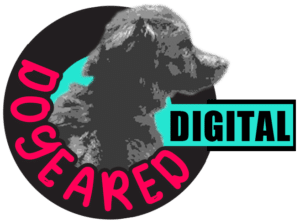So your post got a ton of likes. Congratulations! But what does that even mean? A “like” does not mean someone purchased from your business. A “like” does not mean someone has given you their contact information to become a lead. So what do your social media analytics mean, and how does they actually help you?
Before you fret and move your social media content calendar into your trash folder, know that this is a question marketing professionals have struggled with since social media day one. To this day, research and experts show conflicting studies and opinions when it comes to the true value of social media engagement – and how to track social media analytics.
Can you translate social media analytics into a dollar value?
In the past, companies created proprietary formulas to attempt to calculate the exact dollar value of a Facebook like.
Major brands including Eventbrite, Coca Cola and BMW each designated a Facebook like’s value to their brand – and the results ranged from $8 to $1,600, according to an article from SpotOn.
However, the article also points out that others haven’t been able to attribute any dollar value to Facebook likes.
Forrester – a research group – stated that each Facebook like is actually worth $0. They likened a Facebook like to a stationary object. Stationary objects have potential energy which is useless until a force acts on the object causing it to release that potential energy.
How Much Is A Facebook Like or Fan Really Worth? £1000 or More? by
SpotOn
After about 2013, studies and articles assigning dollar value to social media engagements all but disappeared. While there wasn’t any conclusive documentation about why this tactic became antiquated, it’s likely due to an industry-wide shift in how we think about the value social media provides brands in the first place.
Tracking social media ROI back to the marketing funnel
When you assign a dollar value to a marketing tactic, you’re really just calculating the ROI (Return On Investment). The ROI is calculated simply as total revenue minus total costs. However, to even attempt to calculate ROI is to assume that we can assign a total revenue to social media – and what most have concluded is that we can’t.
The marketers of this decade’s early teens were largely aligning their ROI calculations with the typical marketing funnel: brand awareness leads to brand consideration which leads to making a purchase. But there are two fatal flaws in this line of thinking. 1) Assuming the marketing funnel is linear and 2) equating social media analytics to each phase of the funnel.
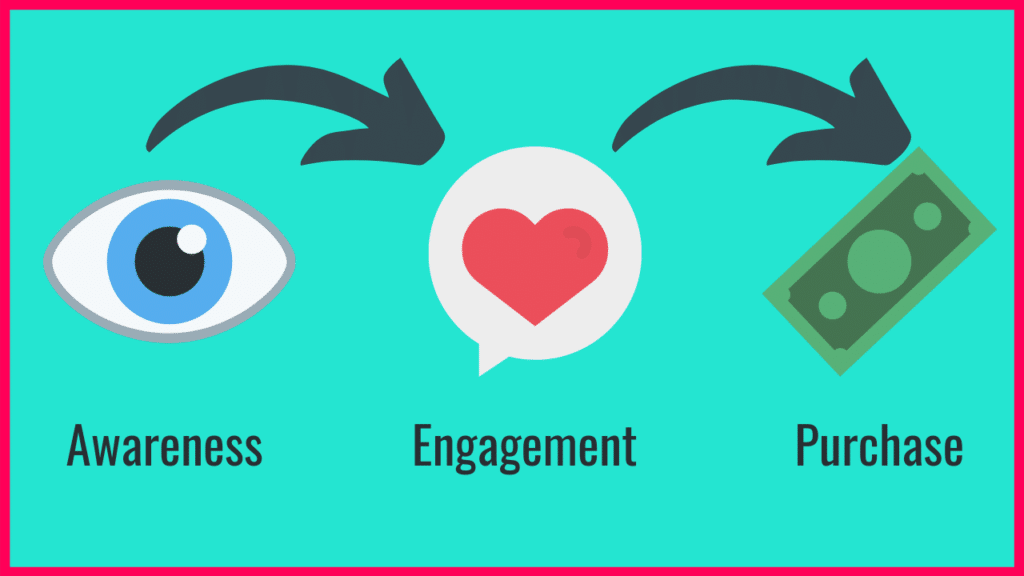
Research has largely shown that in an age where people are in and out of multiple digital channels all day long, the marketing funnel is no longer linear. People jump from being aware of your brand, to considering a purchase from your brand, to forgetting about your brand, to seeing something about your brand six months later, to immediately purchasing.
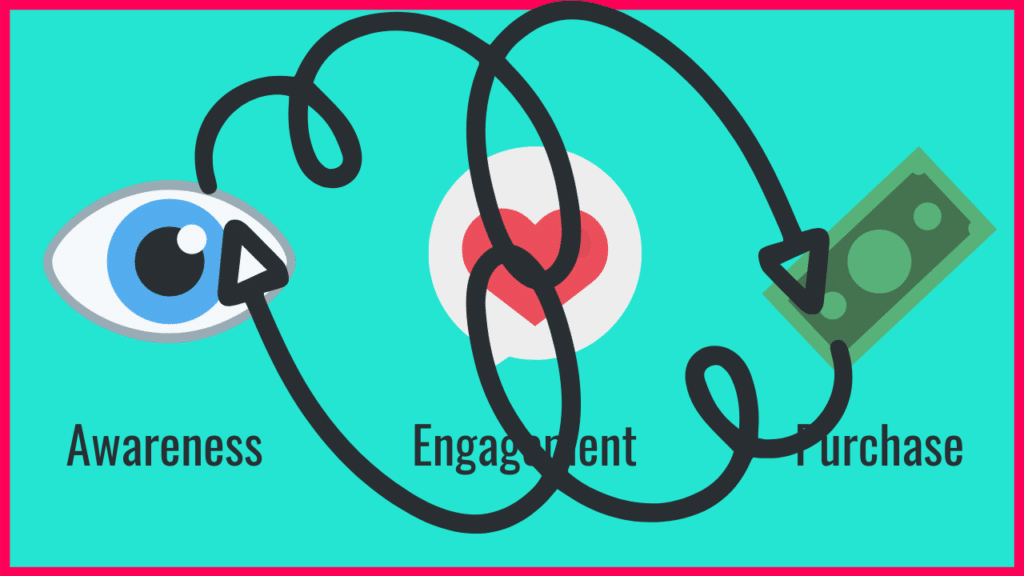
Furthermore, people’s intentions when they engage with a brand on social media vary widely. We all know the passive “liker” in our friend group – the person who just scrolls through the feed and likes everything they see. People like things for hundreds of reasons – anywhere from showing support for a brand they love to just finding something interesting in that moment in time. And, there are people who pay very close attention to brands on social media but just don’t engage. We call these people silent advocates, and their money is just as green as everyone else’s.
So, keeping all of that in mind, how the hell are you supposed to measure social media analytics?
Understanding the real value of social media
While it certainly is possible to track direct sales and leads from social media channels through link tracking (you share a coded product link on social media, then track all sales and leads that came through that code), it’s missing the biggest piece of the social media puzzle. The greatest value a brand receives from social media is staying top of mind among prospective and existing clients and customers with a steady stream of content.
When you leverage social media to motivate and excite your audience, they will often take action outside of the channel by making a purchase, talking to their friends about your brand or engaging with you offline. 89% of people will buy from a brand they follow on social and 71% of consumers who’ve had a positive brand experience on social media are likely to recommend to a friend.
Social media is the only channel where you can reach your audience with fresh messaging every single day – meeting them where they are rather than hoping they come to you. There is literally no replacement for this type of brand exposure on any other on or offline channel, which makes it immensely valuable but almost impossible to tie it back to revenue.
However, tracking social media data is still critical to your brand. Below, we show you how to measure your social media analytics in a way that both proves brand value and provides actionable insights to help you optimize your strategy in 5 easy steps.
1. Use social media analytics as a signal
You can not attribute an engagement to a dollar value for your brand. Repeat it, digest it and move on. Don’t you feel a little bit liberated?
Now, instead of thinking of social media engagements in terms of their numeric values, think of them instead as signals. This is the marketing version of “clap when you’re getting warmer.” Rather than comparing engagements to dollars, compare engagements to themselves. Calculate benchmarks for different social media analytics metrics and compare individual post performance, as well as averages over time.
This is your audience telling you the things about your brand that resonate with them – and the things that don’t. Armed with this knowledge, you can consistently improve the content you’re providing, strengthening the public’s connection with your brand.
PWC found that social media is the strongest source of inspiration for purchases, proving the value of creating content that your audience finds valuable.
2. Map social media metrics back to business goals
Just because you can’t assign a dollar value to your social media analytics doesn’t mean you can’t map them to other business goals. Let’s go back to the purpose of being on social media as a brand to begin with. Same as with any other marketing tactic, it’s probably to increase your revenue. But let’s look more closely at how it might do that.
According to Sprout Social’s 2020 Social Index:
- 40% of people follow brands on social media to be entertained
- 34% of people follow brands on social media to be educated
- 32% of people follow brands on social media to be connected to like-minded people
Keeping that in mind, we can conclude that as a brand, you stand to gain the following by being on social media:
- Generating demand by educating people about why your product or service is valuable to them
- Making people associate your brand with positive feelings
- Getting people to recommend your brand to their friends
When you look at it that way – these goals are easy to map back to social media analytics metrics.
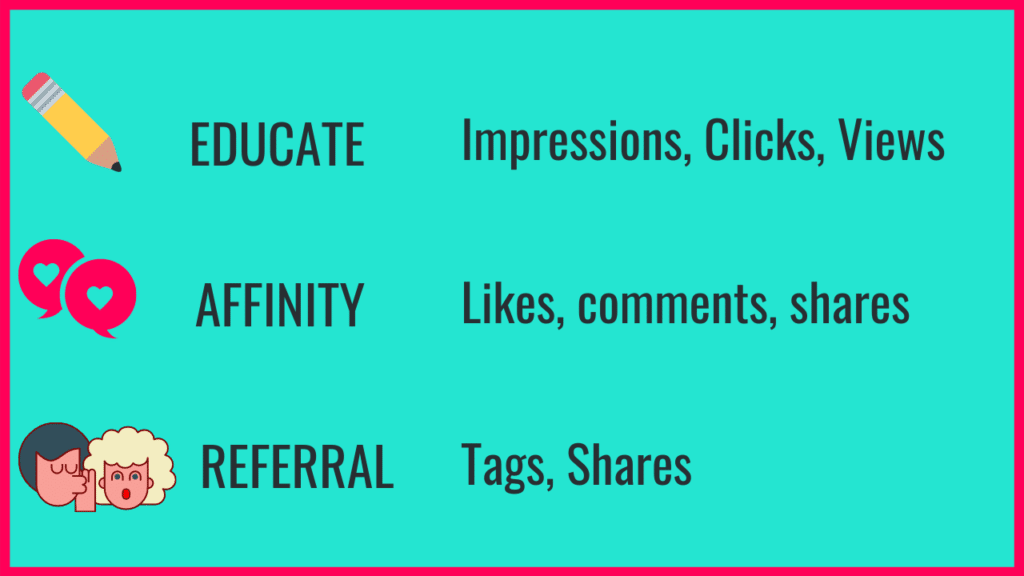
3. Track who is engaging with your content
There’s a big difference in intent between someone who engages with your content who is brand new to your brand verses someone who is a loyal customer. Parsing out not just how many people, but the origin of people who are engaging will help you determine exactly how your content is impacting different segments. Your social media analytics can help.
When you visit post insights on Instagram, there’s a section called “discovery” which will tell you what percentage of accounts that post reached that weren’t originally following you. Similarly, Facebook post data will show you which engagements happened on your page, and which engagements happened when another user shared your post onto their own page. This is a great way to track the amplification of your content and see what is both reaching and resonating with people outside of your existing network.
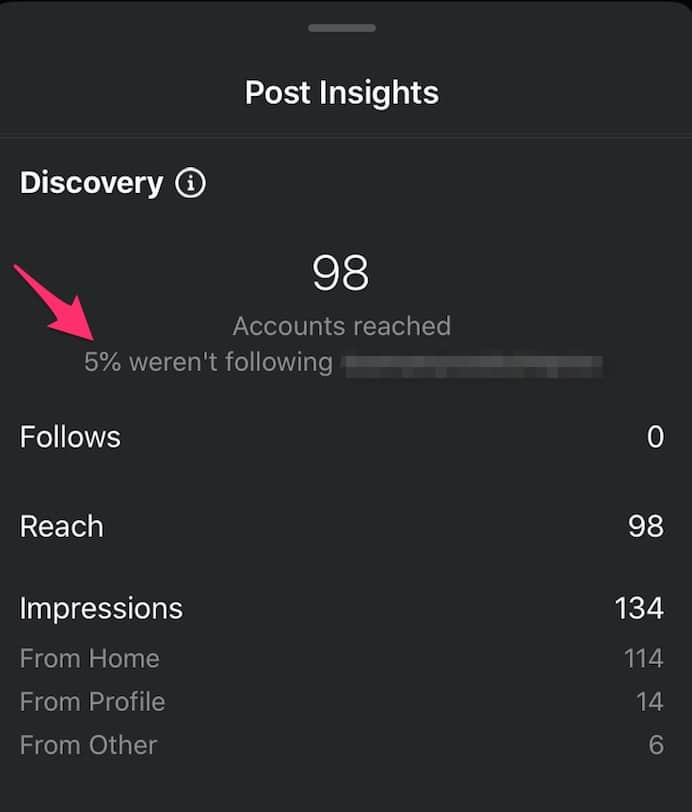
Both Instagram and Facebook track profile visits, calls, emails, clicks to get directions and, of course, link clicks to your website, which can help you gauge how much of your audience is actually close to purchase intent.
4. Bridge the gap between on and offline and engagements
Having worked with dozens of brands across many industries, I can tell you no two audiences behave exactly the same. There’s a very simple way to figure out how your current clients and customers have or prefer to engage with your brand online – just ask them.
I’ve seen several businesses with in-store signage asking customers to like and follow them on Facebook, and many business owners ask customers how they found their brand.
Consider bridging the gap further by asking valued clients and customers how they have engaged with your social media channels as well as how they would prefer to in the future. Do they follow your page? Have they liked, shared or commented on content? What could you offer them on social media that would entice them to continue the relationship online?
This is a win-win. Not only will you gain important consumer insights, but people generally like being asked their opinion or advice, leading to more more positive brand affinity from your customer interaction.
5. Recognize the home run hits exist, even if you can’t track them
You may not be able to assign a dollar value to every granular engagement on social media, but that doesn’t mean some interactions aren’t very, very valuable. These are a lot harder to track or predict – but if you stick with a consistent content plan long enough, they’re bound to happen.
For example, my previous boss found articles I was writing and promoting on Twitter and hired me because of it. Over the years he hired me three times for three different jobs with increasing salaries and levels of responsibility.
Another example is a jewelry subscription box I not only subscribed to for several months, but also purchased a second subscription of for a friend. My introduction to the brand came through a co-worker whose jewelry I noticed and complimented. She pointed me to the artist on Instagram, who I immediately followed. I had no intention of purchasing the subscription at the time, but as her posts continued to appear passively in my feed, I became more and more familiar with her work. Eventually, I was so enamored of her product that I purchased not one, but two subscriptions.
This is another example of a non-linear marketing funnel. While I could possibly count how many impressions I received and how many times I engaged with the Instagram account before purchasing, then divide that by the actual dollars I spent on the product, it would be impossible for her to do that. It would also be equally impossible for her to know my full consumer journey – starting with an in-person interaction with a co-worker.
The lesson is that just because you can’t track these engagements and conversions as granularly as you’d like doesn’t mean the value isn’t happening. And that’s really the beauty of it – you have full license to keep pushing on without having to justify every step of the way.
Track, optimize and grow using the guidelines provided in this post, but also don’t be afraid to let go and know that just by being present, every day you’re swinging for the fences.
